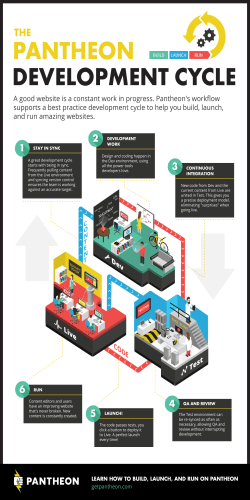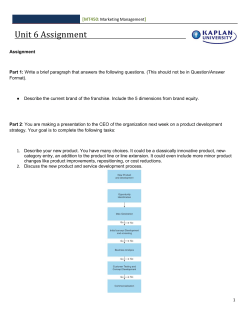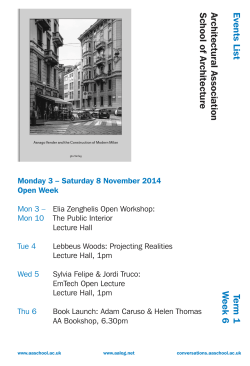
LEOStar™
LEOStar -2 Bus ™ An affordable, versatile, small-to-medium size spacecraft bus suitable for SMEX, MIDEX, ESSP, and Discovery class missions. Compatible with launch vehicles such as Pegasus®, Minotaur, and Delta. LEO Satellite Bus FACTS AT A GLANCE Orbital ATK’s LEOStar-2 series of spacecraft have supported multiple missions for commercial and government customers over the past ten years. The current LEOStar-2 product line has an enviable on-orbit performance record with five on-orbit and two more in production. Design LEOStar-2 "Firsts" Originally designed for the Pegasus XL launch vehicle, Orbital ATK’s LEOStar-2 spacecraft bus provides a flexible, high performance platform for space and earth scientific, remote sensing, and other commercial applications on a variety of launch vehicles (Pegasus, Minotaur and Delta). The avionics architecture has been configured for both single-string and redundant applications, supporting missions with durations up to ten years. LEOStar-2 can accommodate various instrument interfaces, deliver up to 2 kW orbit average payload power, and support payloads up to 500 kg. Performance options include redundancy, propulsion capability, high data rate communications, and high-agility/high-accuracy pointing. Payload Accomodations The flexible LEOStar-2 spacecraft bus has been adapted to a variety of space science, remote sensing, and technology validation missions. The spacecraft employs a compact avionics suite housed within a hexagonal bus platform, enabling Orbital ATK to deliver a significant launch vehicle fairing volume for multiple instruments. Our modular approach to the spacecraft platform and instrument deck enables parallel integration and testing, reducing overall delivery schedule. With the LEOStar-2, Orbital ATK has regularly delivered attitude control better than 15 arc-seconds, with attitude knowledge less than 6 arcseconds. Through the inclusion of higher performance actuators, we can achieve greatly improved agility. Dulles, Virginia SMF There are nine LEOStar-2 spacecraft delivered to customers with two currently in design and production. Gilbert, Arizona SMF • The Dawn planetary spacecraft is the first operational application of electric ion propulsion, the first to orbit a body in the asteroid belt, and the first to rendezvous with and orbit two planetary bodies. • The GALEX satellite performed the first ultraviolet all-sky survey covering approximately 1 million galaxies. • The NuSTAR satellite's X-ray instrument produces images 100 times the sensitivity and 10 times the resolution of previous X-ray observatories. LEOStar -2 Bus ™ Mission Services Customers can procure the LEOStar-2 spacecraft bus alone or as part of a “turn-key” service that includes mission design, instrument/payload integration, satellite environmental test, launch services, early orbit checkout, and mission operations, including instrument data delivery to principal investigators. Orbital ATK has the end-to-end capability to build, integrate, test, launch and operate missions. Production Approach Using mature designs, proven assembly procedures, and established vendor sources, the LEOStar-2 bus can be developed well within 36 months after receipt of order. Heritage Currently, Orbital ATK has five LEOStar based satellites on-orbit and has two in production. First developed for the GeoEye, OrbView-3, and OrbView-4 commercial high-resolution imagery system, the LEOStar-2 spacecraft has flown in a redundant configuration for NASA’s SORCE mission, in a selectively redundant configuration for NASA’s GALEX and OCO-2 missions, and in a single-string configuration for NASA's AIM and NuSTAR missions. Currently LEOStar-2 programs include the TESS and ICON spacecraft. Science applications include atmospheric monitoring, solar irradiance monitoring, and astronomical exploration. With appropriate modification, we have also adapted this bus for JPL’s Dawn interplanetary mission, currently en route to the asteroid Ceres. The Orbiting Carbon Observatory-2 (OCO-2) spacecraft in Orbital ATK's Gilbert, Arizona satellite manufacturing facility. Options • Avionics components, actuators, or sensors to improve system capability and increase mission reliability and lifetime • Expanded on-board solid state memory and X-band downlink for increased payload data storage and high rate data transfer • Hydrazine propulsion capability to enable orbit maneuvers and increase mission lifetime • Spacecraft operations and data delivery Additional Features • Modular Design – Flexibility in design (ACS sensor and actuator selection, payload unique data services), assembly, integration and testing • Low Cost with High Experience – As a world leader in developing and manufacturing affordable mission solutions, Orbital ATK can deliver highly capable flight systems under tight cost and schedule constraints The NuSTAR satellite in Orbital ATK's Dulles, Virginia satellite manufacturing facility. LEOSTAR-2 PROGRAMS ICON Mission: Space Weather Launch: 2017, Pegasus Status: In design TESS Mission: Exoplanet Exploration Launch: 2017, TBD Status: In design Orbiting Carbon Observatory-2 (OCO-2) Mission: Atmospheric Monitoring Launch: 2014, Delta II Status:Operational Nuclear Spectroscopic Telescope Array (NuSTAR) Mission: X-ray Detection of Black Holes Launch: 2012, Pegasus XL Status:Operational Glory Mission: Launch: Status: Atmospheric and Solar Irradiance Monitoring 2011, Taurus XL Lost due to LV failure Orbiting Carbon Observatory (OCO) Mission: Atmospheric Monitoring Launch: 2009, Taurus XL Status: Lost due to LV failure Aeronomy of Ice in the Mesosphere (AIM) Mission: Launch: Status: Atmospheric Monitoring 2007, Pegasus XL Baseline mission complete, currently in extended operations OrbView-3 Mission: Launch: Status: Remote Sensing 2003, Pegasus XL Spacecraft de-orbited after image sensor failure Galaxy Evolution Explorer (GALEX) Mission: Astronomical Exploration Launch: 2003, Pegasus XL Status: Mission complete Solar Radiation and Climate Experiment (SORCE) Mission:Solar Irradiance Measurement and Monitoring Launch: 2003, Pegasus XL Status: Baseline mission complete, currently in extended operations OrbView-4 Mission: Remote Sensing Launch: 2001, Taurus Status: Lost due to LV failure LEOStar -2 Bus ™ Spacecraft Features Spacecraft Mass: 150 kg to 500 kg (with propellant) Launch Vehicle Compatibility:Pegasus® XL, Minotaur, Delta II and Falcon Design Life: Up to 5 years Orbit Options:LEO: 450-1,000 km altitude, 5°-110° inclination. Adaptable to HEO, GEO and deep space. Geolocation:<12 m @ 90% Circular Error, post processing (optional) Operations:Simultaneous data acquisition by payload(s) and data transmission capability Galaxy Evolution Explorer (GALEX) satellite Onboard Data Storage Capability:Scalable to 1,600 Gbit in data recorder and 32 Gbit in flight computer Delivery: 30-36 months after receipt of order Attitude Control Subsystem ADCS Approach:S-band at 2 mbps, optional X-band at 15 mbps Pointing Accuracy: <15 arcsec/axis available (3σ) Pointing Knowledge:<6 arcsec/axis available (3σ) Pointing Stability: <1 arcsec per second Agility:Slew rate up to 1°/sec per axis (standard), Slew rate >3°/sec per axis (optional) SORCE solar irradiance monitoring satellite Propulsion:Blowdown monopropellant hydrazine; up to 140 kg propellant (optional) Communications Payload Data Downlink:2 Mbps S-band (standard), up to 150 Mbps X-band (optional) Command Uplink:2 Kbps S-band (standard), up to 128 Kbps (optional) Payload Accomodation External Volume: Up to 1.388 m3 in Pegasus XL Maximum Payload Mass:210 kg (463 lb.) (standard), up to 550 kg (1,213 lb.) (optional) Maximum Payload Aeronomy of Ice in the Mesosphere (AIM) satellite Power:118 W orbit average (standard), up to 2 kW (optional) Interface Architecture: RS-422/RS-485, LVDS, MIL-STD-1553 Orbital ATK www.orbitalatk.com ©2014 Orbital ATK FS003_06_3695 For more information, please contact: science@orbitalatk.com (703) 406-5000
© Copyright 2025







![[WCR-300S] How to Change the Wireless Network Name(SSID)](http://cdn1.abcdocz.com/store/data/000232989_1-c13ffbaf9a88e423608ef46454e68925-250x500.png)







